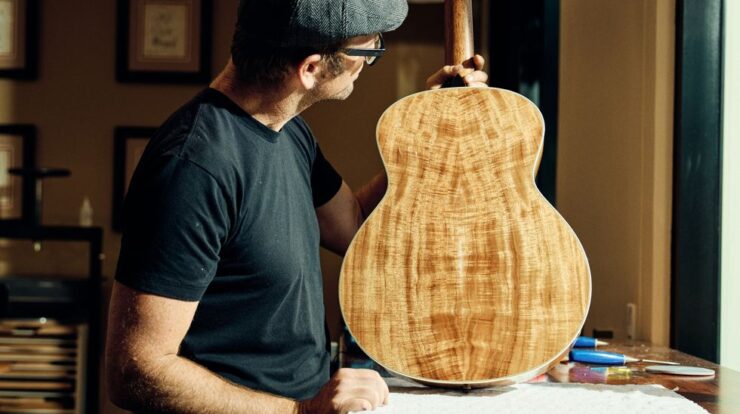This post was originally published on this site
Master Butchers
The Making of Carcass’s Surgical Steel
Carcass’s decision to take a well-earned victory lap a little more than a half-decade into the 21st century quickly turned into a succession of shows and tours. The band, which then featured originals Jeff Walker and Bill Steer along with Necroticism/Heartwork guitarist Michael Amott and Arch Enemy drummer Daniel Erlandsson, was a festival staple for years following their comeback. At no point, however, did the band sit down and discuss writing songs. Amott said outright he didn’t think Carcass should write new material.
As the band logged miles and lanyards, something unexpected happened: Steer felt the itch to write Carcass songs. Surgical Steel—possibly the best metal comeback album ever released—started with an old tape of riffs he kept since the ’90s. Some ideas were earmarked for Swansong, but discarded when that record took a different direction. Steer also kept coming up with new riffs that sounded a lot more like Carcass than his rock band Firebird. When Amott and Erlandsson departed amicably, the stage was set for Carcass to try out new material.
After a cursory email to Exodus guitarist Gary Holt (who instead joined Slayer), Carcass decided to try working as a trio for the first time since Symphonies of Sickness. But they needed a drummer. Fortunately, they’d met former Aborted drummer and fellow Brit Dan Wilding years ago during a United States tour and never forgotten him. Wilding was asked to join the legendary band after just one audition; his first act as Ken Owen’s heir apparent was to start writing what became Surgical Steel with Steer in a small rehearsal space.
Bringing back a revered band to tour is a risky proposition. Writing new material long after your heyday is even more dangerous. A bad show or tour is quickly forgotten; a bad album is eternal. Carcass, however, far surpassed the challenge with Surgical Steel. It’s not just a worthy comeback, but one of the best albums in their long career. The album was assembled primarily through a series of rehearsals over a year. In a nod to the past, producer Colin Richardson (who produced all the classic Carcass albums) returned—and quit during mixing. Andy Sneap, who years later joined Judas Priest as a touring guitarist, took Surgical Steel to the finish line.
Surgical Steel has been called a worthy follow-up to Carcass’s masterworks, but that does it a disservice. Surgical Steel distills the best parts of vintage early-to-mid-’90s Carcass while honoring Steer and Walker’s long journey since Hall of Fame albums Symphonies of Sickness, Necroticism – Descanting the Insalubrious and Heartwork. Wilding, then just in his mid-20s, managed the incredibly difficult task of honoring the Carcass sound while adding his style and perspective.
Surgical Steel was the best-received album of Carcass’s career, especially if you consider the horrified reception to their grind debut, Reek of Putrefaction. It was named Decibel’s Album of the Year in 2013 and our Album of the Decade for 2010 through 2019. Invisible Oranges called it a “superlative Carcass record that often bests what many consider their finest hour, Heartwork, and, in its brightest moments, reaches the heights set by their masterpiece Necroticism – Descanting the Insalubrious.” It even reached the Top 50 in the U.K. charts. Surgical Steel’s reputation has only grown in the past decade-plus.
Surgical Steel is now also Carcass’s fourth induction overall. We once again welcome the master butchers to the hallowed Hall.
Need more classic Carcass? To read the entire seven-page story, featuring interviews with the members who performed on Surgical Steel, purchase the print issue from our store, or digitally via our app for iPhone/iPad or Android.
The post Carcass – Surgical Steel appeared first on Decibel Magazine.




